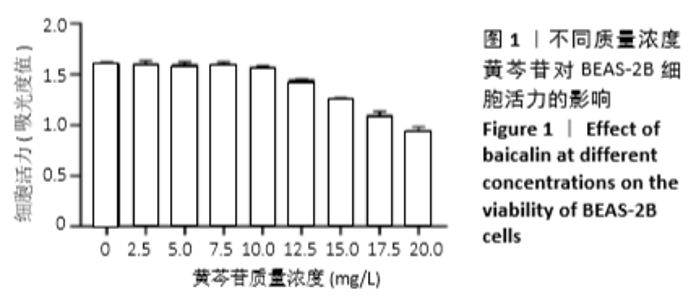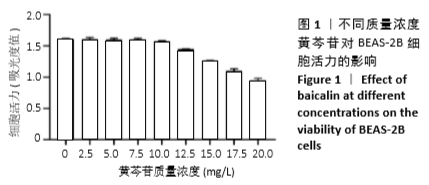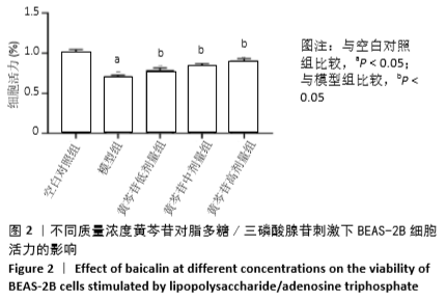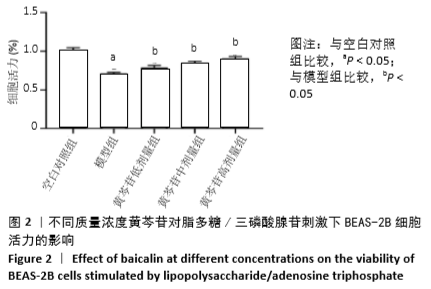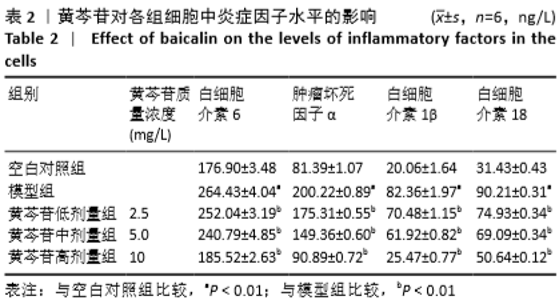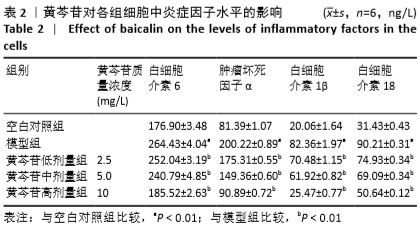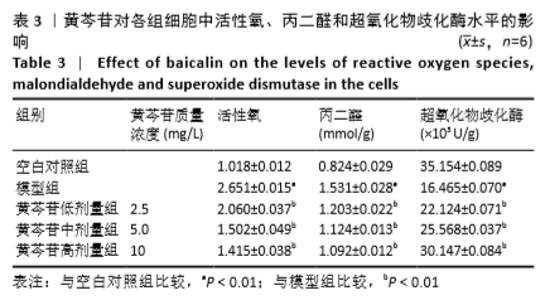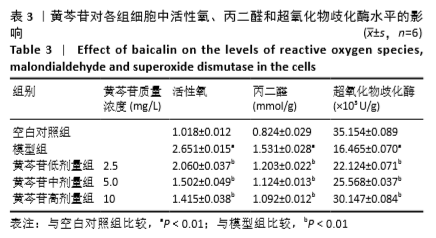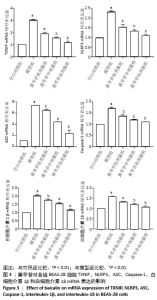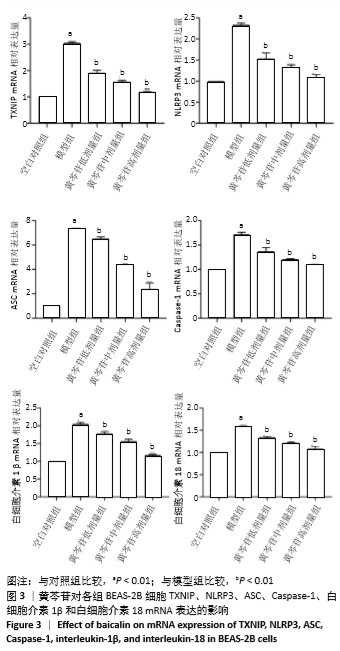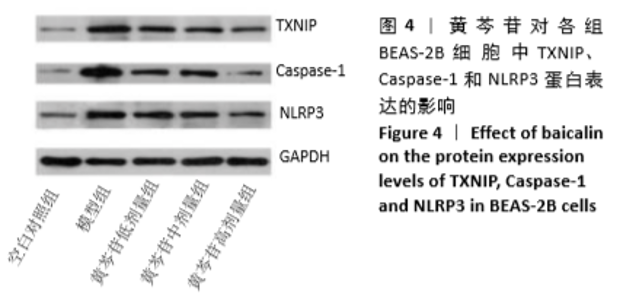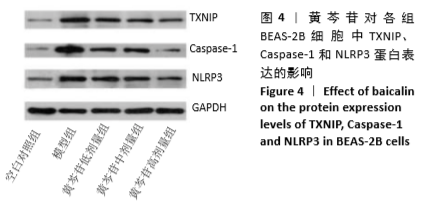[1] LI L, ZHANG YG, TAN YF, et al. Tanshinone II is a potent candidate for treatment of lipopolysaccharide-induced acute lung injury in rat model. Oncol Lett. 2018;15(2):2550-2554.
[2] TANG B, LI X, REN Y, et al. MicroRNA-29a regulates lipopolysaccharide (lps)-induced inflammatory responses in murine macrophages through the Akt1/ NF-κb pathway. Exp Cell Res. 2017; 360(2):74-80.
[3] PENG LY, YUAN M, SONG K, et al. Baicalin alleviated APEC-induced acute lung injury in chicken by inhibiting NF-κB pathway activation. Int Immunopharmacol. 2019; 72:467-472.
[4] ZHI HJ, ZHU HY, ZHANG YY, et al. In vivo effect of quantified flavonoids-enriched extract of Scutellaria baicalensis root on acute lung injury induced by influenza A virus. Phytomedicine. 2019; 57:105-116.
[5] CHEN XB, SU HW, LIU HX, et al. Anti-inflammatory and analgesic effects of Bi-yuan-ling granules. J Huazhong Univ Sci Technolog Med Sci. 2016; 36(3): 456-462.
[6] DING XM, PAN L, WANG Y, et al. Baicalin exerts protective effects against lipopolysaccharide-induced acute lung injury by regulating the crosstalk between the CX3CL1-CX3CR1 axis and NF-kappaB pathway in CX3CL1-knockout mice. Int J Mol Med. 2016; 37(3):703-715.
[7] ZHANG X, SUN CY, ZHANG YB, et al. Kegan Liyan oral liquid ameliorates lipopolysaccharide-induced acute lung injury through inhibition of TLR4-mediated NF-kappaB signaling pathway and MMP-9 expression. J Ethnopharmacol. 2016; 186: 91-102.
[8] SHU S, XU Y, XIE L, et al. The role of C/EBPbeta phosphorylation in modulating membrane phospholipids repairing in LPS-induced human lung/bronchial epithelial cells. Gene. 2017; 629:76-85.
[9] CABRERA-BENITEZ NE, PÉREZ-ROTH E, CASULA M, et al. Anti-inflammatory activity of a novel family of aryl ureas compounds in an endotoxin-induced airway epithelial cell injury model. PLoS One. 2012; 7(11): e48468.
[10] KOYAMA S, SATO E, NOMURA H, et al. The potential of various lipopolysaccharides to release monocyte chemotactic activity from lung epithelial cells and fibroblasts. Eur Respir J. 1999; 14(3): 545-552.
[11] YEH CH, CHO W, SO EC, et al. Propofol inhibits lipopolysaccharide-induced lung epithelial cell injury by reducing hypoxia-inducible factor-1alpha expression. Br J Anaesth. 2011; 106(4): 590-599.
[12] FANG XZ, GE YL, CHEN ZY, et al. NecroX-5 alleviate lipopolysaccharide-induced acute respiratory distress syndrome by inhibiting TXNIP/NLRP3 and NF-kappaB. Int Immunopharmacol. 2020; 81: 106257.
[13] JIANG L, FEI D, GONG R, et al. CORM-2 inhibits TXNIP/NLRP3 inflammasome pathway in LPS-induced acute lung injury. Inflamm Res. 2016; 65(11): 905-915.
[14] REN Y, YANG Z, SUN Z, et al. Curcumin relieves paraquatinduced lung injury through inhibiting the thioredoxin interacting protein/NLR pyrin domain containing 3mediated inflammatory pathway. Mol Med Rep. 2019; 20(6): 5032-5040.
[15] ZHOU R, YAZDI AS, MENU P, et al. A role for mitochondria in NLRP3 inflammasome activation. Nature. 2011; 469(7329):221-225.
[16] BROZ P, DIXIT VM. Inflammasomes: mechanism of assembly, regulation and signalling. Nat Rev Immunol. 2016; 16(7): 407-420.
[17] MAO X, YU CR, LI WH, et al. Induction of apoptosis by shikonin through a ROS/JNK-mediated process in Bcr/Abl-positive chronic myelogenous leukemia (CML) cells. Cell Res. 2008;18(8):879-888.
[18] QIU H, LIU W, LAN T, et al. Salvianolate reduces atrial fibrillation through suppressing atrial interstitial fibrosis by inhibiting TGF-beta1/Smad2/3 and TXNIP/NLRP3 inflammasome signaling pathways in post-MI rats. Phytomedicine. 2018; 51:255-265.
[19] ZHAI H, KANG Z, ZHANG H, et al. Baicalin attenuated substantia nigra neuronal apoptosis in Parkinson’s disease rats via the mTOR/AKT/GSK-3β pathway. J Integr Neurosci. 2019; 18(4):423-429.
[20] HUANG Y, SUN M, YANG X, et al. Baicalin relieves inflammation stimulated by lipopolysaccharide via upregulating TUG1 in liver cells. J Physiol Biochem. 2019;75(4):463-473.
[21] 潘聪,李占东,苑鹏.高核苷酸酵母水解物对脂多糖诱导RAW264.7细胞免疫调节的影响[J].食品与发酵工业, 2019, 45(7): 8-14.
[22] LIU X, MENG J. Tanshinone IIA ameliorates lipopolysaccharide-induced inflammatory response in bronchial epithelium cell line BEAS-2B by down-regulating miR-27a. Biomed Pharmacother. 2018;104:158-164.
|
